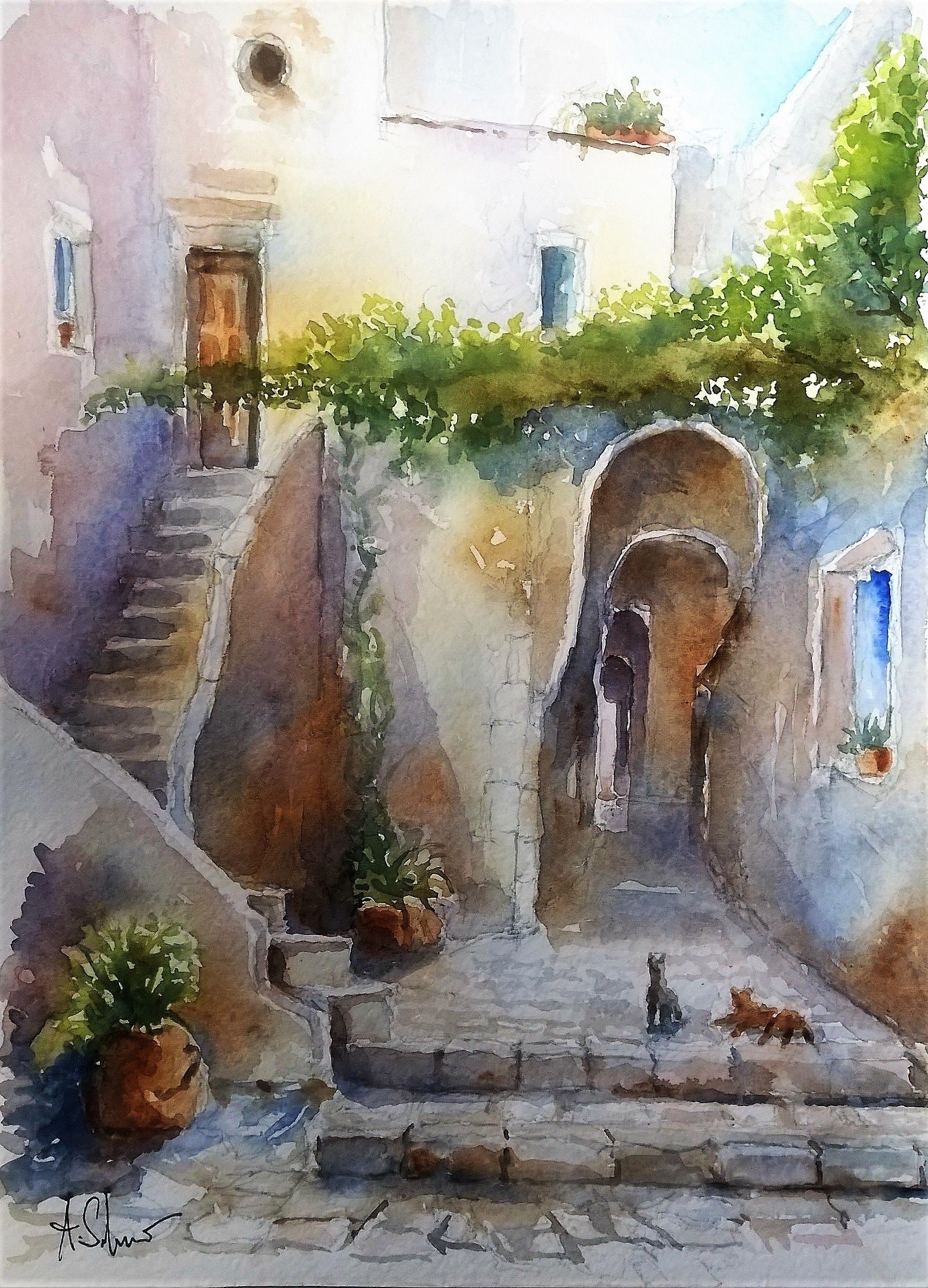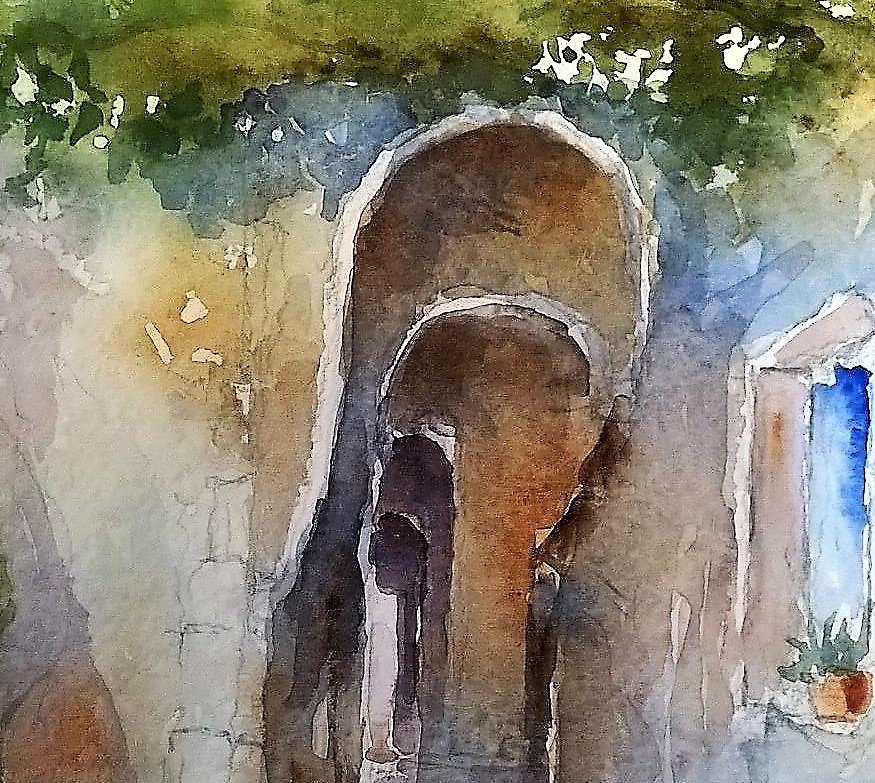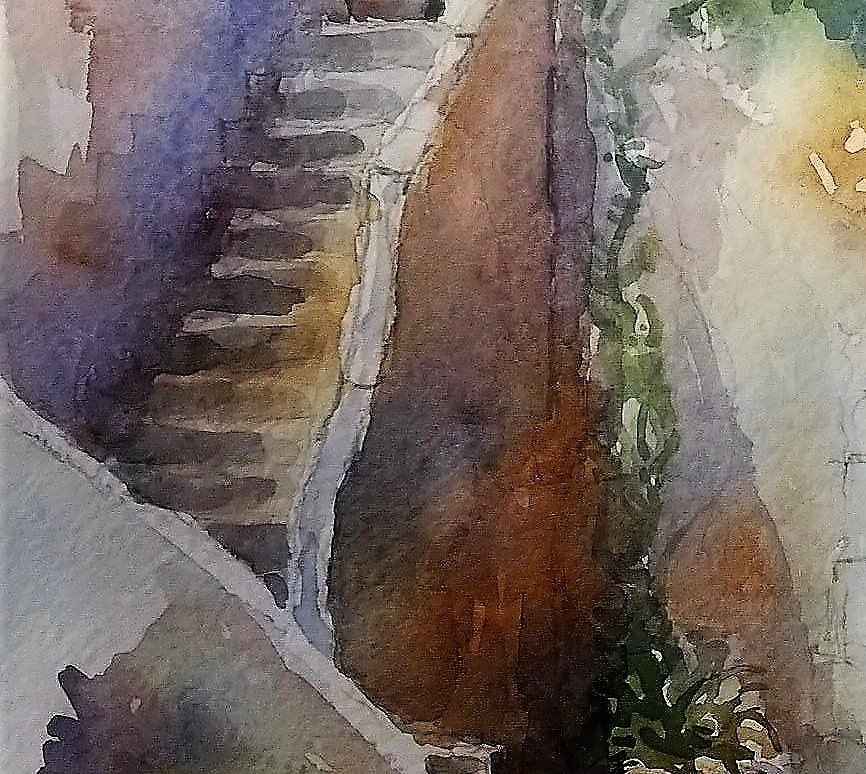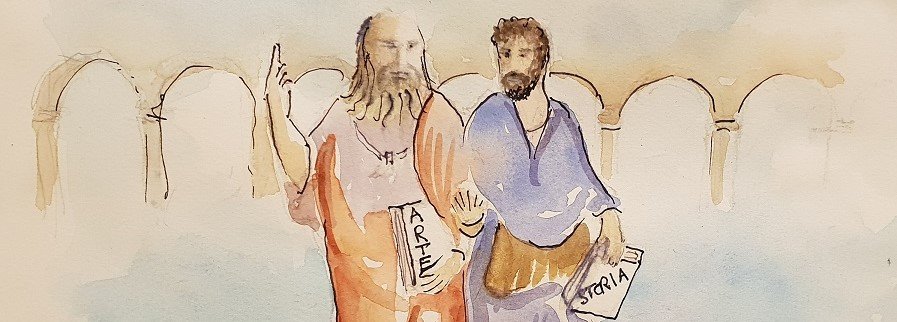
games of light and shadows

2 0 1 8
watercolor private collection - Prague


Ciao a tutti, condivido un acquarello che rappresenta di un vicolo di Sperlonga con giochi di luce e ombre.
Come potete vedere ci sono due piccoli personaggi che oziano in una giornata estiva, sulla fresca pietra calcarea del borgo antico.
Ho cercato di cogliere l'atmosfera estiva attraverso i colori caldi con le ombre addolcite sulle pareti bianche delle case.
Per le ombre, con l'acquarello si usano due o tre colori mescolati tra loro.
Il blu cobalto, terra di Siena bruciata e un leggero tocco di grigio di Payne.
Raramente il grigio di Payne viene usato allo stato puro, mescolato con il cobalto o l'acquamarina assume un tono più brillante e intenso.
Da ricordare che nella tecnica pura dell'acquarello, non essendoci il bianco, è il colore della carta stesso che illumina, secondo la quantità o le velature di colore che poniamo sopra di essa.
L'acquarello è l'unica tecnica pittorica dove si lavora in negativo, al contrario.
Dal chiaro allo scuro, per velature e passaggi successivi di colore.
L'acquarello non si può cancellare:
un colore chiaro non può coprire un tono più scuro, nelle altre tecniche, olio, tempera e acrilico invece, possiamo sempre recuperare coprendo il malfatto con altri colori.
Quindi niente errori o ripensamenti.
E' sempre consigliato di stendere i colori con leggere mescolanze tra loro, logicamente partendo dal colore più chiaro, si può aggiungere il corrispettivo del tono più scuro.


Hello everyone, I share a watercolor representing an alley of Sperlonga with plays of light and shadows.
As you can see, there are two small characters who are happy on a summer day, on the fresh limestone of the ancient village.
I tried to capture the summer atmosphere through the warm colors with the softened shadows on the white walls of the houses.
For the shadows, two or three colors mixed together are used with the watercolor.
Cobalt blue, burnt Sienna and a slight touch of gray from Payne.
Payne gray is rarely used in its pure state, mixed with cobalt or aquamarine, which has a brighter and more intense tone.
Remember that in the pure technique of the watercolor, there being no white, it is the color of the card that illuminates, according to the quantity or the veils of color that we place above it.
Watercolor is the only painting technique where you work in negative, on the contrary.
From light to dark, for veiling and successive color passages.
The watercolor can not be deleted:
a light color can not cover a darker tone, in other techniques, oil, tempera and acrylic instead, we can always recover covering the wrong with other colors.
So no mistakes or second thoughts.
It is always recommended to spread the colors with light mixes between them, logically starting from the lighter color, you can add the corresponding of the darker tone.

Come potete vedere, le ombre interne degli interni degli archi sono ottenute con diversi colori, per rendere l'acquarello più vibrante e godibile, ocra, gialla, terra di siena bruciata e naturale si fondono con il cobalto.
Le due arcate sullo sfondo per dare loro più profondità ho usato un violetto con acquamarina.
As you can see, the internal shadows of the interiors of the arches are obtained with different colors, to make the watercolor more vibrant and enjoyable, ocher, yellow, burnt and natural sienna earth blend with cobalt.
The two arches in the background to give them more depth I used a violet with aquamarine.

In questi due particolari, potete notare le differenze di temperature di colore, ottenute con l'uso dl violetto, del cobalto e delle ocre.
Lasciando i bianchi della carta, possiamo ottenere le vibrazioni e variazioni di luce. il caratteristico risultato tipico dell'acquarello, che lo rende il RE della LUCE.
In these two details, you can see the differences in color temperatures, obtained with the use of violet, cobalt and ocher.
By leaving the white paper, we can get the vibrations and variations of light. the typical typical result of the watercolor, which makes it the KING of LIGHT:

grazie per aver letto un abbraccio da Armando
thanks for reading a hug from Armando


discovery-it
@discovery-it

Vieni a trovarci sulla prima rivista dedicata al mondo dell'arte&storia

